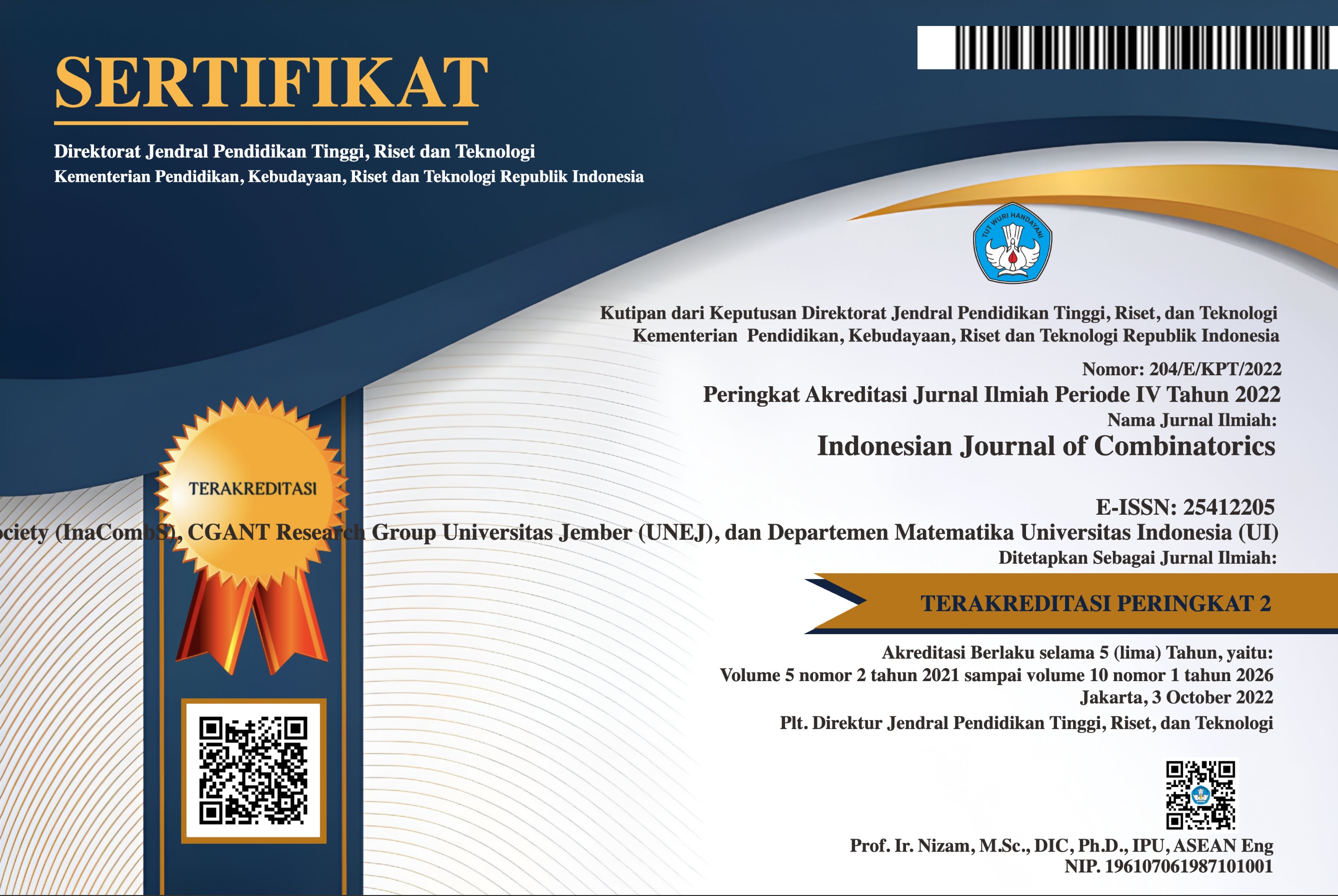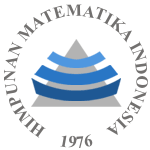Exploring the Power of Graph Theory in Hadron Theory: From Bound States to Quark Systems
Abstract
The article discusses how graph theory has been utilized in hadron theory for high energy interactions in recent years. The paper emphasizes the significance of a visual perspective throughout the discussion and explores how graph theory can aid in creating various systems such as bound state systems. Additionally, the paper delves into how graph theory has been used to develop few-body quark systems and how it can connect with adjacency and incidence matrices in the graph theory by providing examples of how these fundamental principles have been applied to topics ranging from hadronic bound states.
Keywords
Full Text:
PDFDOI: http://dx.doi.org/10.19184/ijc.2023.7.2.5
References
M. Abu-Shady and M. Rashdan, Effect of a logarithmic mesonic potential on nucleon properties in the coherent-pair approximation, Physical Review C, 81(1), (2010), 015203.
M. Abu-Shady, Nucleon Properties Below the Critical Point Temperature, Int. J. Modern Phys., 50 (2011), 1372 -- 1381.
M. Abu-Shady, Chiral Logarithmic Quark Model of N and Δ with an A-Term in the Mean-Field Approximation, Int. J. Modern Phys. A., 26(2), (2011), 235 -- 249.
M. Abu-Shady, Meson properties at finite temperature in the linear sigma model, Int. J. Modern Phys., 49 (2010), 2425 -- 2436.
M. Abu-Shady and M. Soleiman, The extended quark sigma model at finite temperature and baryonic chemical potential, Physics of Particles and Nuclei Letters, 10 (2013), 683 -- 692.
M. Abu-Shady, The effect of finite temperature on the nucleon properties in the extended linear sigma model, Int. J. Modern Phys. E., 21(06), (2012), 1250061.
M. Abu-Shady, and E. M. Khokha, Bound state solutions of the Dirac equation for the generalized Cornell potential model, Int. J. Modern Phys. A., 36(29), (2021), 2150195.
M. Bachlechner, T. Birkenfeld, P. Soldin, A. Stahl, and C. Wiebusch, Partition pooling for convolutional graph network applications in particle physics, J. Instrumentation, 17 (2022), P10004.
E. Bernreuther, et al., Casting a graph net to catch dark showers, (2020), arXiv:2006.08639
M. C. Birse and B. K. Manoj, Chiral model for nucleon and delta, Physical Review D, 31(1), (1985), 118.
J. Bruna, K. Cho, K. Cranmer, G. Louppe, I. Henrion, and J. Brehmer et al, Neural message passing for jet physics Deep Learning for Physical Sciences Workshop, 31st Conf. on Neural Information Processing Systems (NIPS), (2017).
A. Butter, G. Kasieczka, T. Plehn and M. Russell, Deep-learned Top Tagging with a Lorentz Layer, SciPost Phys, (2018), 028.
CERN, Performance of mass-decorrelated jet substructure observables for hadronic two-body decay tagging in ATLAS, Technical Report No. ATL-PHYS-PUB-2018-014, (2018).
A. Elabd, et al., Graph Neural Networks for Charged Particle Tracking on FPGAs, Front Big Data, (2022), 5: 828666. doi: 10.3389/fdata.2022.828666
J. Guo, et al., Boosted Higgs boson jet reconstruction via a graph neural network, Physical Review D, 103(11), (2021), 116025.
M. Gell-Mann and L. Maurice, The axial vector current in beta decay, Il Nuovo Cimento, (1955-1965) 16.4 (1960), 705 -- 726.
R. Gupta, Introduction to lattice QCD, arXiv preprint hep-lat/9807028, (1998).
Z. Han, D.S. Kammer, and O. Fink, Learning physics-consistent particle interactions, PNAS Nexus, 1(5), (2022), pgac264.
A. Hariri, D. Dyachkova, and S. Gleyzer, Graph generative models for fast detector simulations in high energy physics, arXiv preprint, arXiv:2104.01725 (2021)
A. Huang, X. Ju, J. Lyons, D. Murnane, M. Pettee, and L. Ree, Heterogeneous Graph Neural Network for Identifying Hadronically Decayed Tau Leptons at the High Luminosity LHC, Journal of Instrumentation, 18, P07001.
Q. Huilin and L. Gouskos, A note on the metric dimension of subdivided thorn graphs, Indones. J. Combin., 3(1), (2019), 34 -- 40.
A. Jahanshir, Metric dimension of wheels, Far East J. Appl. Math., 8(3), (2002), 217 -- 229.
J. Kahn, et al., Learning tree structures from leaves for particle decay reconstruction, Machine Learning: Science and Technology, 3(3), (2022), 035012.
E. Khoram, et al., Graph Neural Networks for Metasurface Modeling, ACS Photonics, (2022).
P. T. Komiske, E. M. Metodiev and J. Thaler, Energy flow networks: deep sets for particle jets, J. High Energy Phys., 50(98), No 4 (2007), 371 -- 376.
V. Mikuni and F. Canellim, ABCnet: An Attention-Based Method for Particle Tagging, Eur. Phys. J. Plus, 135, 463 (2020), https://doi.org/10.1140/epjp/s13360-020-00497-3
N. Mistry, A brief introduction to particle physics, Laboratory for Elementary Particle Physics, Cornell University, (2011), 10.
H. Mitchell, A. Norcliffe, and P. Liò, Learning Feynman diagrams using graph neural networks, arXiv preprint, (2022), arXiv:2211.15348
F. Mokhtar, R. Kansal, and J. Duarte, Do graph neural networks learn traditional jet substructure?, arXiv preprint, (2022), arXiv:2211.09912.
E. A. Moreno et al, On the metric dimension of the triangle-net graph, AIP Conf. Proc., (2022).
E. A. Moreno, et al., Interaction networks for the identification of boosted H → bô decays, Phys. Rev. D, 102 (2020), 012010.
M. Rashdan, M. Abu-Shady, and T. S. T. Ali, Extended linear sigma model in higher order mesonic interactions, Int. J. Modern Phys. E., 40 (2002), 17 -- 32.
M. Rashdan, M. Abu-Shady, and T. S. T. Ali, Nucleon properties from modified sigma model, Int. J. Modern Phys. A., 22 (2007), 2673 -- 2681.
J. Shlomi, B. Peter, and V. Jean-Roch, Graph neural networks in particle physics, Machine Learning: Science and Technology, 2.2 (2020), 021001.
A. M. Sirunyan et al, Particle-flow reconstruction and global event description with the CMS detector, JINST, 2017 (2017), 12 P10003.
V. S. Timote, and L. L. Celso Luiz, Effective interactions from q-deformed inspired transformations, Physics Letters B, 635(2-3) (2006), 168-171.
P. Villanueva-Domingo, et al., Inferring Halo Masses with Graph Neural Networks, The Astrophysical Journal, 935(1) (2022), 30.
Y. Wang, et al., Dynamic Graph cnn for Learning on Point Clouds, (2018), arXiv:1801.07829.
Y. Yuan, W. Wang, and W. Pang, A systematic comparison study on hyperparameter optimisation of graph neural networks for molecular property prediction, Proceedings of the Genetic and Evolutionary Computation Conference, (2021).
Refbacks
- There are currently no refbacks.

This work is licensed under a Creative Commons Attribution-ShareAlike 4.0 International License.












